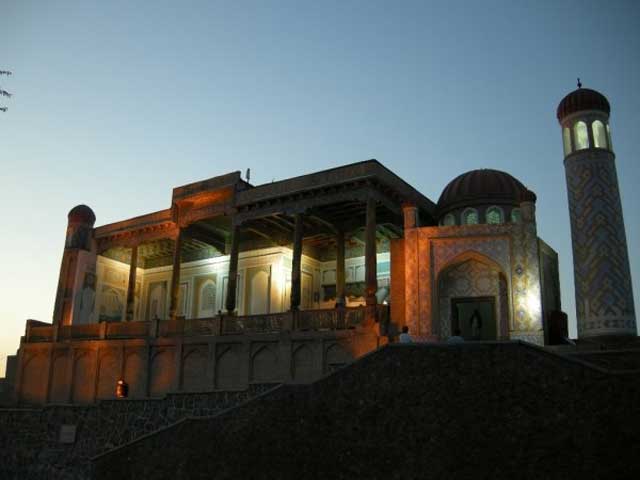The first decades of Arabian supremacy in Central Asia were not peaceful.
The Caliphate lost the control over Samarkand and Bukhara several times. In the mid-8th century, Maverannahr was stirred by internecine conflicts in the Caliphate, finalized by the success of the Abbasids. The first years of the Abbasids were marked by a triumphal victory of the Muslims near Talas, where in 751 vicarious ruler of Samarkand, Ziyad ibn Salikh smashed the Chinese army, which invaded the lands of Shash and Fergana.
In the 770s, the valleys of Zerafshan and Kashka Darya as well as northern Tokharistan were convulsed by anti-Arab revolt, led by mysterious Mukanna. Insurgents had forced Samarkand, Nahsheb, Kesh, Termez and Chaganian. It took the Arabs several years to recover their authority. At the beginning of the 9th century, Samarkand became a center of Rafi ibn Lais’s revolt, supported by Qarluks, Uigurs and Tibetans. The revolt had swept all Central Asia, from Khorezm up to Fergana. Just titanic efforts of the Arabs headed by the future caliph al-Mamun alowed to suppress this revolt. The members of local elite, which joined al-Mamun, were given the posts of Caliph's vicarious rulers.
The Takhirids became rulers of Khurasan (821 -873) and the major centers of Maverannahr - Samarkand, Fergana, Shash and Ustrushana were given to the Samanids. By 875, the Samanids had become so powerful, that caliph Mutadim had to give full rights in possession of all Maverannahr with the capital in Samarkand to the head of their family, Nasr (875-892). Nasr was succeeded by famous Ismail Samani (892-907). The latter conquered Khurasan and transferred the capital to Bukhara, in the 10th century, the state of the Samanids. only formally dependent on the Abbasid Caliphate, became the largest empire in Middle East. Protection of the Samarads and consolidation of the Islamic world from Gibraltar up la Turkistan allowed the Central Asian merchants - Muslims to restore their control over international trade. Samarkand. Bukhara and the other centers of Central Asia received another opportunity to prosper owing to intermediary in international trade. The majority of Muslim coins, found in the north of Europe, date from the 10th century and more than two thirds of them are Samanid.
In the first centuries of Islam. Samarkand gained epithets: “Shining place of the globe*. “Precious pearl of the East". In the 9th-10th centuries, shahristan occupied 220 hectares. To the south from shahristan was located rabad with bazaars, mosques, baths and caravanserais. In the citadel there was a royal palace and prison, beside - a cathedral mosque, in the quarter of Isfizar- the palace of the Samanids. The city had a lead water supply. In the early Middle Ages, Samarkand craftsmen adapted manufacture of the Chinese paper. After the battle at Talas, captive Chinese were involved in manufacturing of the Samarkand paper. Numerous workshops occurred along the Siab, giving the water for rotation of paper mills. Spreading of the Samarkand paper in Islamic countries created favourable conditions for hand-written books production. Later, the Samarkand paper was estimated as a sample of high quality and imitation.


